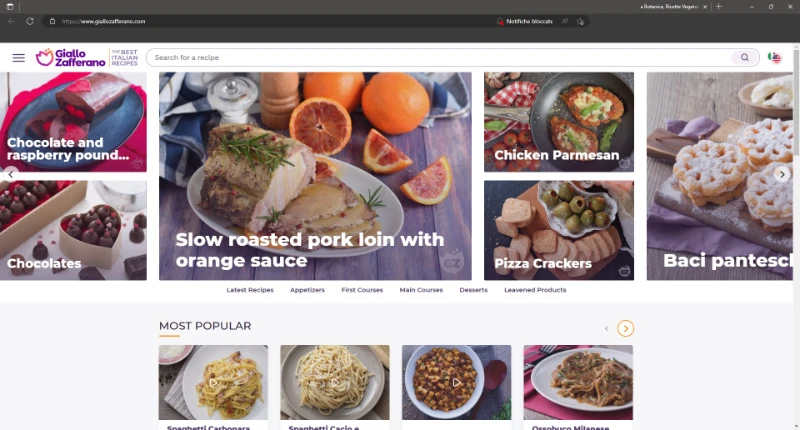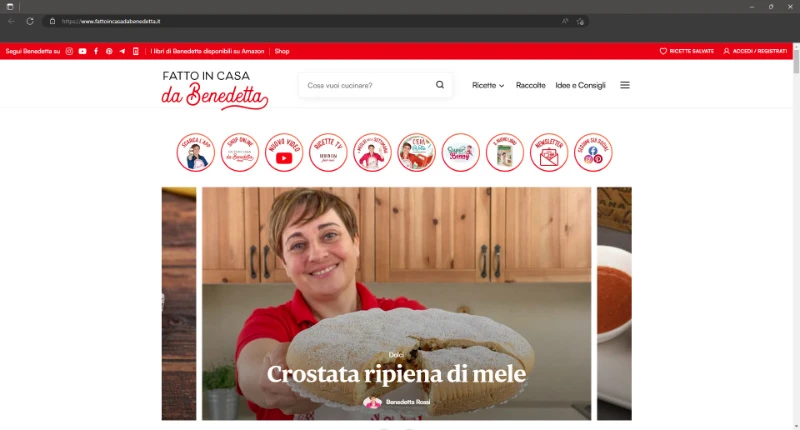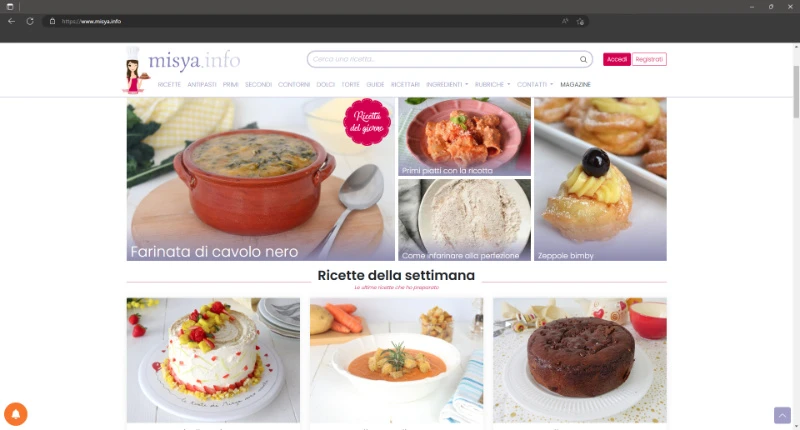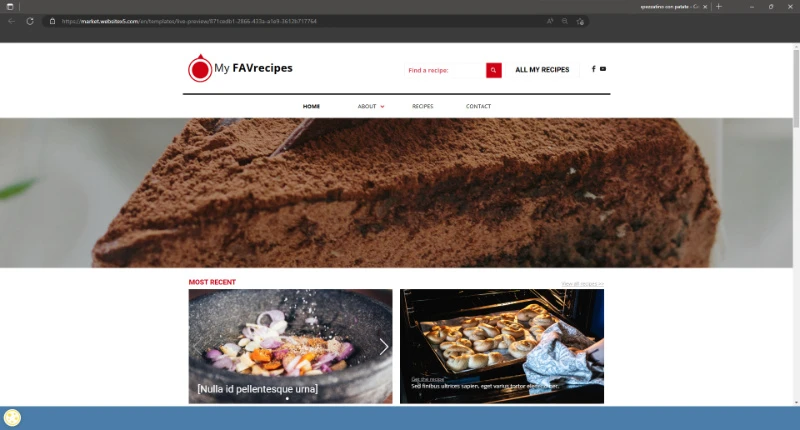How to start a food blog
Published by Incomedia in Guides and Tips · Monday 06 Mar 2023
When I started trying my hand at pots, pans and stoves, I'd look for recipes in books and magazines. Now it's all stored in a box in the cellar, and when I need inspiration or advice I look directly online.
Food blogs are plentiful and tasty. Others are more general, while others are more specific. Is there still room for new blogs on this topic? How do you start one?
In fact, knowing how to start a food blog for food enthusiasts or anyone who enjoys cooking these days is a great opportunity for sharing your own passion online and, if desired, to also earn money from this activity.
If you're also a food lover who wants to learn more about creating and managing your own food blog, this is the perfect article for you!
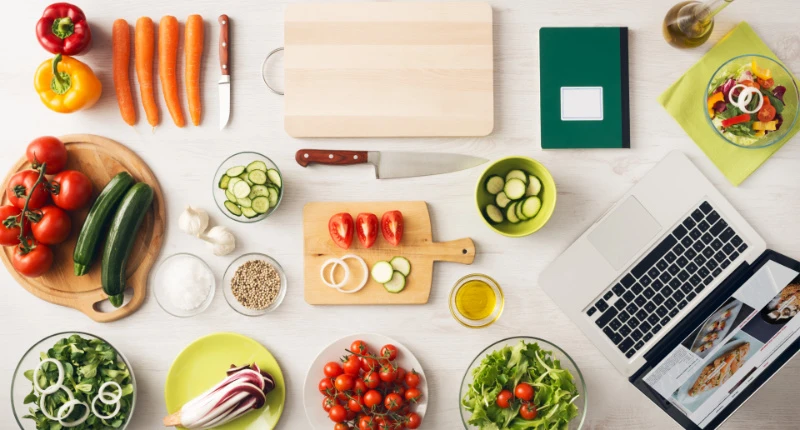
The name: what to call your food blog
Having made the decision to start a food blog, if you want to be successful you'll need to do things right. We discussed this thoroughly in the following article: How to create a blog You can't just jump right in, you need to think about the goals you want to achieve, the niche you're looking to fill and the audience you intend to reach.
Having clarified these points, you now have an important issue to resolve: figuring out a name for your food blog. A good name is essential. It needs to be intriguing to readers but, at the same time, it should be short and unique.
I know it can all be a bit complicated, but don't worry. To help you find the right name, we have some foolproof tips:
- Choose a name that represents your niche. For example, if you like vegan food, you might choose a name like "Vegan Kitchen", or "Green Food". These are names that attract readers interested in a certain type of cuisine, who are looking for information, recipes and ingredients suited to their needs.
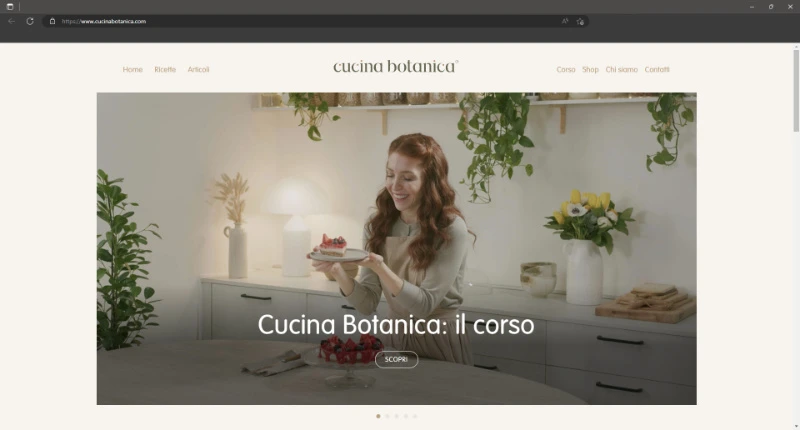 https://www.cucinabotanica.com/ - Can there possibly be any doubts on the recipes you can find in this blog?
https://www.cucinabotanica.com/ - Can there possibly be any doubts on the recipes you can find in this blog?
https://www.giallozafferano.com/ - Here, we have the energy of color combined with the flavor and refinement of a spice, all in a musical name that's filled with suggestion.
- Choose a name that's easy to remember. Avoid complicated or hard-to-spell names. For example, "Gourmet Alchimie di Sapori e Profumi" (Gourmet Alchemy of Flavors and Fragrances) could create more of a problem due to the length and abstract nature of the words.
- Use your own name. If you want to give your blog a personal touch, use your name as part of the blog's name. This is what one of the most famous food bloggers in Italy, Benedetta Parodi, has chosen to do.
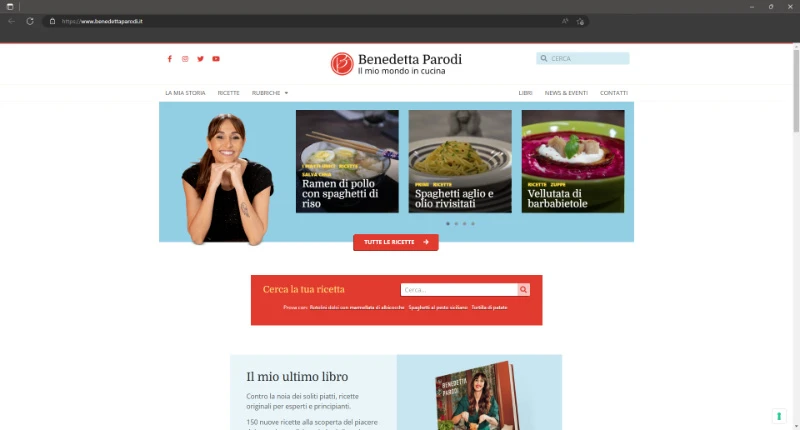 https://www.benedettaparodi.it/ - Benedetta turned the focus on herself with a name that was already established in the field of journalism.
https://www.benedettaparodi.it/ - Benedetta turned the focus on herself with a name that was already established in the field of journalism. - Do some brainstorming with friends and family. Ask them for advice to come up with a unique and catchy name. Sometimes the winning idea is hiding where you least expect it: in the nickname you were given as a child, in the quirks that only good friends know about, in a flash of genius from the most creative in your group.
Of course, you can mix suggestions. For example, you can use your name while referencing a niche. Something like "Sara's House of Cakes" immediately clarifies who you're addressing and, at the same time, create a relationship of familiarity with your readers. This is what another famous food blogger did. Does “Fatto in casa da Benedetta” (Homemade by Benedetta) mean anything to you?
https://www.fattoincasadabenedetta.it/ - The authenticity of home-made food combined with the name of the cook tastes great and inspires trust.
One last thing. When you think you've found the right name, check that the domain is available. It would be strange if the title of your blog didn't correspond to the address that users need to type into the browser bar to reach it!
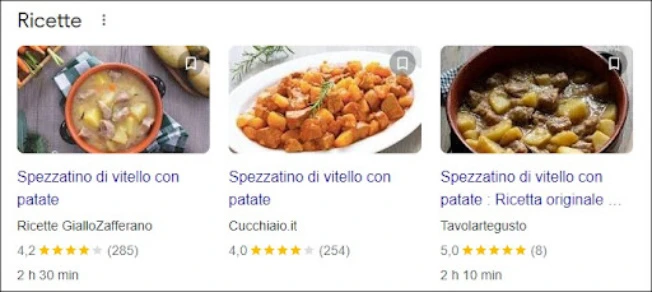
Which recipe do you choose? Which ever looks most appetizing. That's why photos are so important!
Profession: Food Blogger. Who is this and what do they do?
Now that you have a name and a domain, you're ready to start your blog. With the right tool (and we'll talk about this later), you can be online faster than you imagine.
Super! You've taken your first step in becoming a food blogger.
But how do you actually go about food blogging?
Basically, a food blogger is a person who regularly writes and publishes recipes, restaurant reviews, food recommendations and news from the world of gastronomy, while sharing personal culinary experiences with readers.
The focal point of the definition lies precisely in the adverb "regularly". A successful blog doesn't work "in fits and starts". You can't publish something only when you have time, when you feel like it or when you feel you have the right inspiration. You need to establish a rhythm and follow it consistently.
THis said, the best thing to do is put together an editorial plan in which you'll determine your frequency of publication, rubrics and types of content.
https://www.misya.info - Have you noticed the weekly programming and the focus on the current holiday? This is the result of a solid editorial plan.
It can be as simple as a spreadsheet in which you'll list all your posts and record basic information for each of them, including publication dates, titles, tags and categories, sources, etc.
Having one medium to long-term strategy allows you to choose which content to focus on, to have time to develop it and to maintain a good pace by getting your readers used to a fixed schedule.
By working methodically, you can transform your passion into something more. There are many examples of bloggers who have managed to make blogging their primary profession. You could be next!
Not just text: the importance of photos and video recipes
Now, let's add another element to our definition of food blogger.
A food blogger writes, but not just that. He/she rounds out his/her texts with the appropriate images and perhaps creates video content and podcasts.
Generally speaking, photographs and videos are an extremely effective way to improve the quality and appeal of food blogs, making them even more interesting and engaging for readers.
In particular:
- They attract attention of readers. Images and videos are much more captivating than written text and manage to attract the attention of readers, causing them to linger on the blog content.
- They help people understand the recipe. Especially in cases where written instructions might be unclear, images and videos can make all the difference by helping someone better understand each step of a recipe.
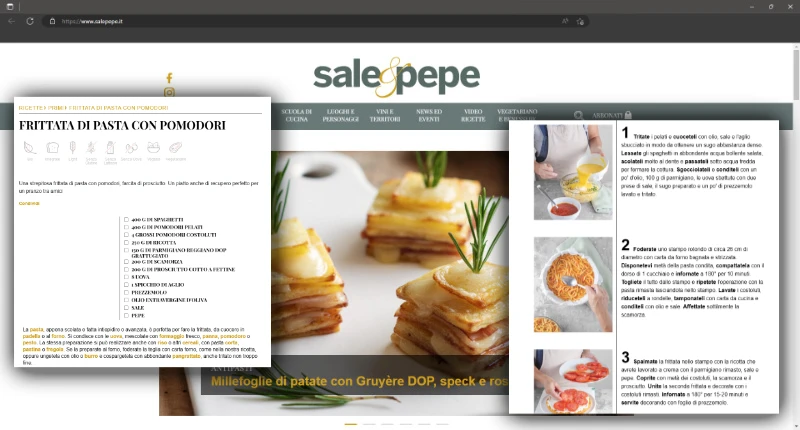 https://www.salepepe.it/ - Like this, anyone can easily follow a recipe.
https://www.salepepe.it/ - Like this, anyone can easily follow a recipe. - They make the blog more engaging. Watching a person at work brings everything back to a more personal dimension this helps people feel more engaged in the recipe making process.
- They also improve sharing on social media. People are more likely to share engaging and visually appealing content. Captivating images and high-quality videos can, therefore, increase a blog's visibility and attract new readers.
What do we learn from all this? We learn that writing a great post is just the starting point. You need to accompany it with lovely photos and, if you want to aim for the best, also make a video version of it.

Which recipe do you choose? Which ever looks most appetizing. That's why photos are so important!
You can also see how important the visual component is from the number of tutorials, articles and courses you can find on the subject of Food Photography. Try conducting an online search. You’ll discover a whole new world!
Promoting the blog: from SEO to Social Media
Once the posts have been written and published, a food blogger's work has just began.
A food blogger must actively promote the blog in order to expose it to an ever-growing audience and increase the number of readers.
There isn't just one way to promote a blog. There is, rather, one set of strategies you can implement. You need to try something, monitor the results you get and figure out what works best for you, your blog and your readers.
The most-used strategies you can use include:
- Social Media: This is a great tool for promoting food blogs and increasing visibility. Use the main platforms like Facebook, Instagram and Pinterest, sharing your posts and interacting with the community.
- Collaborating with other bloggers and influencers: This is a great way to increase your blog's visibility and gain new readers. In addition, participating in cooking events and/or food festivals allow you to build relationships and gain exposure.
- SEO optimization: This is essential in order for your blog to be well-positioned in search engine results. Using relevant keywords, structuring the site intuitively and paying attention to the user experience are just some of the important factors.
- Leveraging newsletters: This is a great way to keep readers informed of the latest blog news and entice them to revisit yours. Try offering exclusive content or discount coupons to further encourage reading.
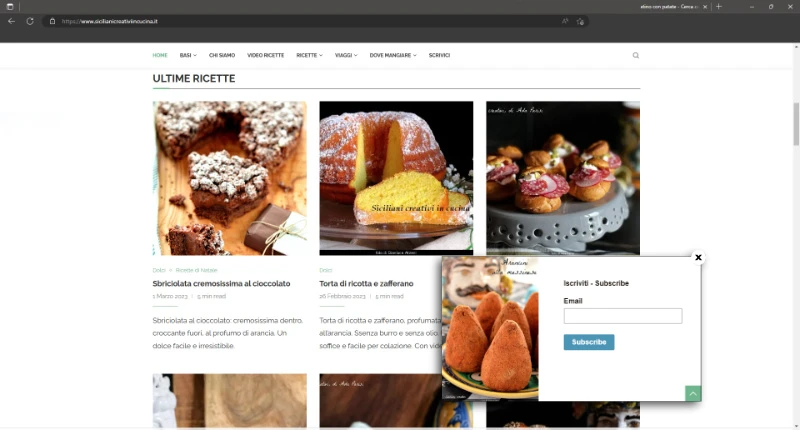 https://www.sicilianicreativiincucina.it - A small form in a pop-up window can be very effective for attracting new subscribers to a newsletter.
https://www.sicilianicreativiincucina.it - A small form in a pop-up window can be very effective for attracting new subscribers to a newsletter. - Joining online groups: This is a great way to connect with new readers and build relationships with other bloggers and food enthusiasts.
Making money through a food blog? It can be done!
Let's complete our definition of a food blogger with one last important piece.
A food blogger can earn money through their blogs.
Numerous food bloggers who have succeeded in the endeavor demonstrate that it can be done. You can transform your passion for cooking into a second job to supplement your income or even into your full-time profession and main source of income.
Methods for making money through a food blog are many. It's best to diversify and not rely on just one method, but try to identify and use a hybrid of the ones that work best. So much will depend on the magnitude and popularity of your blog, in addition to the quality of the content and the level of interaction with your readers.
The most common ways to make money through a blog include:
- Advertising: You can use services such as Google AdSense or collaborate with companies interested in sponsoring a blog.
- Collaborations and sponsorships: You can collaborate with brands in the food sector to promote products and services related to the world of gastronomy.
- Sales of products or services: You can create and sell products such as e-books, guides or online courses or offer consulting and/or catering services.
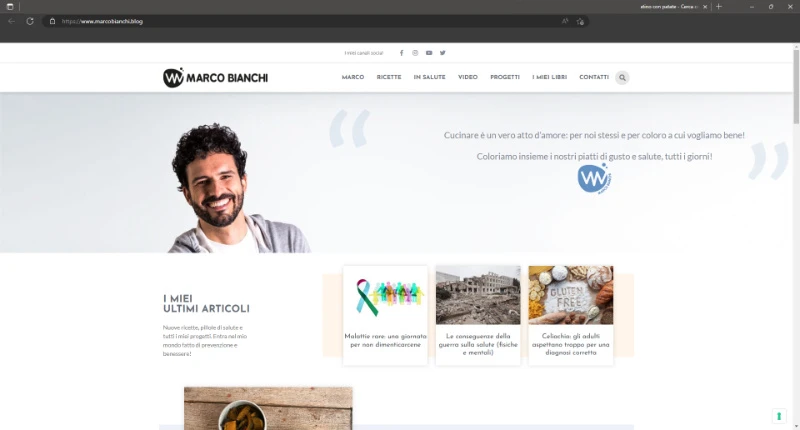 https://www.marcobianchi.blog/ - A site, a blog and numerous projects, including books that can be purchased directly through Amazon.
https://www.marcobianchi.blog/ - A site, a blog and numerous projects, including books that can be purchased directly through Amazon. - Affiliation: Promoting products and/or services through affiliate programs allows you to earn commission for every purchase you drive.
- Events and workshops: You can organize events, workshops and cooking classes and monetize them through the sale of tickets or the participation of sponsors.
Our solution for your food blog
Now that you know what it means to start a food blog, you may be wondering which tool/service you should use to create the pages you'll put online.
The options are vast and varied. You should choose mainly based on how important the blog is to you. The more important it is, the more you should be prepared to invest in order for it to function correclty and have the greatest chance for success and growth.
Sometimes the investment required for the use of a professional tool is quite low, and this is the case with Website X5. It's the perfect software for creating blogs as well as showcase sites and online stores.
MyFAVRecipes - One of WebSite X5's templates that's perfect for creating a food blog.
With WebSite X5, you can begin with a template and customize it according to your needs. You can provide a home page where you present the project, a bio for introducing yourself, a page with your physical location and/or social media contact information and, of course, the actual blog. For the blog, you'll have a full-service editor which you can use to create posts as well as specific functions for their scheduling and online publication. You'll have the ability to round out the posts with images and videos, manage SEO optimization and promote their sharing via social media.
A bit of advice? Try WebSite X5 for free and discover everything you can do.
In this video tutorial, we'll show you how easy it is to create a blog using WebSite X5.
If you need information or advice, feel free to contact us.


